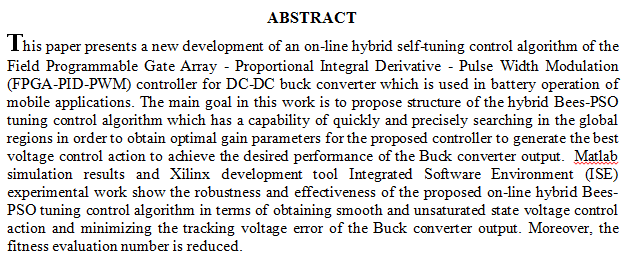
This study investigated the prevalence of quinolones resistance proteins encoding genes (qnr genes) and co-resistance for fluoroquinolones and β-lactams among clinical isolates of Klebsiella pneumoniae. Out of 150 clinical samples, 50 isolates of K. pneumoniae were identified according to morphological and biochemical properties. These isolates were collected from different clinical samples, including 15 (30%) urine, 12 (24%) blood, 9 (18%) sputum, 9 (18%) wound, and 5 (10%) burn. The minimum inhibitory concentrations (MICs) assay revealed that 15 (30%) of isolates were resistant to ciprofloxacin (≥4µg/ml), 11 (22%) of isolates were resistant to levofloxacin (≥8 µg/ml), 21 (42%) of isolates were re
... Show More (3)
(3)
 (1)
(1)
The current study is descriptive; it focuses on studying the contemporary geopolitical problem, and sectarian differences in Caucasus. Nagorno-Karabakh is considered an important disputed region nowadays. Many parties and states participated in this dispute, especially after the conflict had developed into an open war between Armenia and Azerbaijan. Thus, the study aims to examine the causes of the conflict in this region, analyze the international positions on this conflict, and find if Armenia was able to occupy this region. The methodology adopted by the researchers is the functional approach, and the theory of power analysis that Cohen created for analyzing all strengths that drove each of the parties t
... Show MoreNew complexes of first series of transition metals with P-amino benzene dithiocarbamate of the general formula [M(PABdtc)2] and [ M(PABdtc)2(L)n] M=Fe( ІІ ),Co( ІІ ),Ni( ІІ ) ,Cu(ІІ) and Zn (ІІ). PABdtc = Paraamino benzene dithiocarbamate ,n=2 when L= Py,ɣ-Pic,iso qunoline ,3,5lutidine n=1when L=1,10-phenanthroline, en, 2,-2bipy.and the type(R)4N[Ni(PABdtc)3] R= methyl, ethyl are prepared. Physico chemical characterization of these complexes was applied using magnetic susceptibility measurements, molar conductance , Infrared and electronic spectra, Metal content measurements, molar conductance indicate complexes of the type [M(PABdtc)2] and [M(PABdtc)2(L)n] are non-electrolyte
... Show MoreBackground: Diagnosis and treatment planning can be difficult with conventional radiographic methods as the orthodontic-surgical management of impacted canines requires accurate diagnosis and precise localization of the impacted canine and the surrounding structures. This study was aimed to localize and evaluate weather there is any differences in the diagnostic information provided by multi-slice computed tomography three dimensional volumetric CT images and two dimensional reconstructed panorama images (derived from CT) in subjects with impacted maxillary canines. Materials and Methods: Thirty patients including 24 female and 6 male with mean age of 18 years with suspected unilaterally or bilaterally impacted maxillary canines were evalu
... Show Moren this research, some thermophysical properties of ethylene glycol with water (H2O) and two solvent mixtures dimethylformamide/ water (DMF + H2O) were studied. The densities (ρ) and viscosities (η) of ethylene glycol in water and a mixed solvent dimethylformamide (DMF + H2O) were determined at 298.15 K, t and a range of concentrations from 0.1 to1.0 molar. The ρ and η values were subsequently used to calculate the thermodynamics of mixing including the apparent molar volume (ϕv), partial molar volume (ϕvo) at infinite dilution. The solute-solute interaction is presented by Sv results from the equation ∅_v=ϕ_v^o+S_v √m. The values of viscosity (B) coefficients and Falkenhagen coefficient(A) of the Jone-Dole equation and Gibbs free
... Show MoreHydrogen productions were achieved by irradiating ethanol ic aqueous solutions (20%. v/v) containing mixtures of the ligand 2,4- dimethoxybcnzylidene-2-hydroxy aniline (HL) or one of i ts complexes (ML2) wi th the following divalent ions: fVbl (II), Fc(IT), Co(II). Ni( rt ), Cu(H) and Zn (11), as photosensi1izers, methyl viol ogen (MY.:-) as electron acceptor. ethylene diamine  
... Show MoreSix transition metal complexes of Cr (III), Mn(II), Co(II), Ni(II), Cu(II), and Zn(II) were prepared using 1,2-bis -(4-Amino-2,3-dimethyl-1- phenyl-pyrazolinyl)-diimino ethane(L) as ligand. These complexes were characterized by elemental analysis, magnetic susceptibility, UV/VIS and FT-IR spectroscopy. These data showed that the solid complexes of Mn(II), Co(II), Zn(II) were tetrahedral geometry, and Cr(III) was octahedral while the symmetry around Ni(II) and Cu(II) ions with the new ligand were square planar of the formula [ML]Cl2 , M=Ni(II) and Cu(II).
A simple method for the determina
... Show MoreMeasurements of excess molar volumes VE , viscosities η , excess viscosities Δ ln η and excess molar activation energies of viscous flow ΔGE , are reported for binary mixtures of dimethylformamide (DMF) with , benzene , o-xylene , 1,4- dioxane and tetrahydrofuran are reported from density and viscosity measurements at 298.15 k and at atmospheric pressure over the entire composition range . The excess values are positive for the mixture (DMF+ polar solvent) and negative deviation from ideality for the mixture (DMF + non-polar solvent) over the whole composition range and discussed in the light of molecular interaction in the mixture.
The percentage of fatty acids, quantity of tocopherols, tocotrienols, carotens and physiochemical characteristics of crude red palm oil have been evaluated, in addition to specific chemical detection of active compounds unsaponifiable matters. Results of Gas Liquid Chromatography showed:- The major fatty acids in red palm oil is palmitic (44.36%) then oleic (39.65%), linolenic (10.55%), stearic (3.56%), myristic (1.22%), arachdonic (0.24%) and palmotic (0.19%). Red palm oil contains ? – ?- ?- ? – Tocopherols with concentration 258 , 121 , 259, 109 m/kg oil , ? – ?- ?- ? – Tocotrienol with concentration 462.77 , 571.03, 619.18, 509.07 m/kg oil respectively. Total tocopherols & tocotrienols 2909.05 m/kg oil and
... Show MoreThe study involved preparing a new compound by combining between 2-hydroxybenzaldehyde and (Z)-3-hydrazineylideneindolin-2-one resulting in Schiff bases and metal ions: Mn(II), Co(II), Ni(II), Cu(II), and Zn(II) forming stable minerals-based-Schiff complexes. The formation of resulting Schiff bases is detected spectrally using LC-Mss which gave corresponding results with theoretical results, 1H-NMR proves the founding of N=CH signal, FT-IR indicates the occurrence of imine band and UV-VIs mean is proved the ligand formation. On the other hand, minerals-based-Schiff was characterized using the same spectral means that relied with ligand (Schiff bases). Those means gave satisfactory results and proved the suggested distinguishable geometries.
... Show More